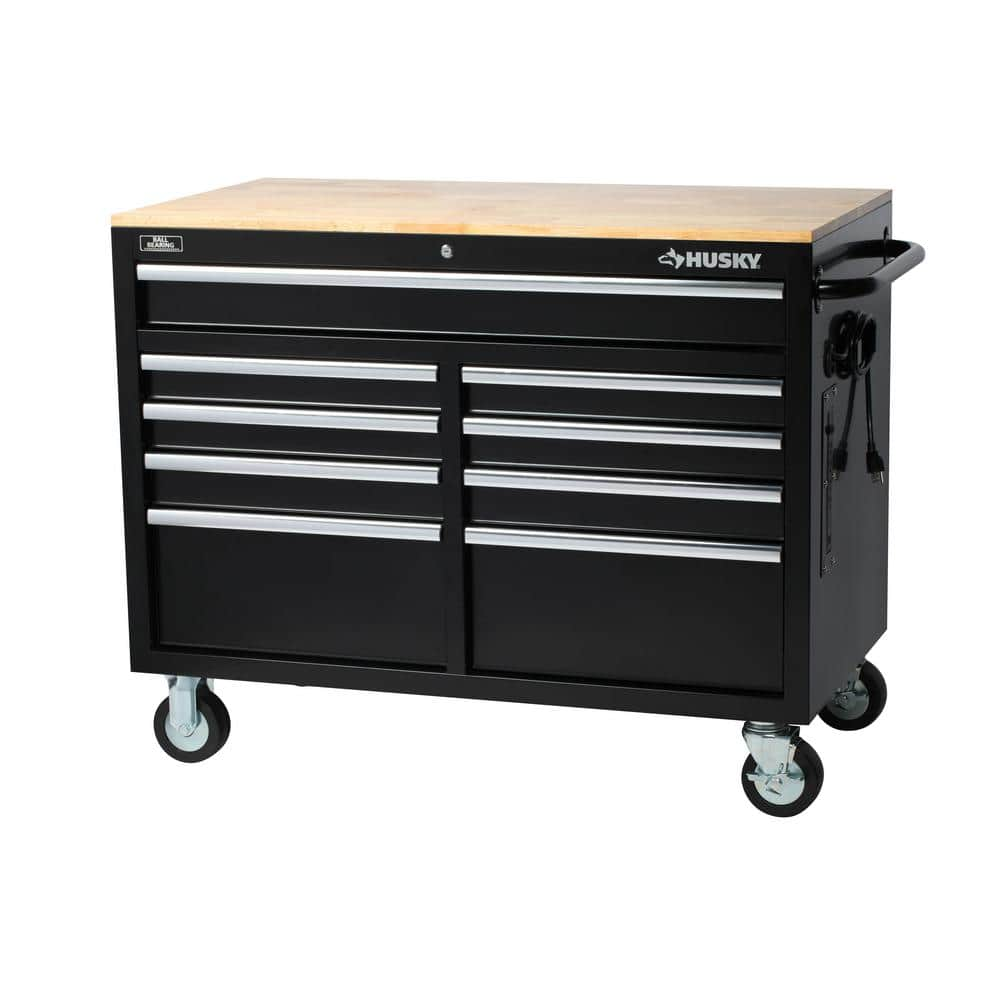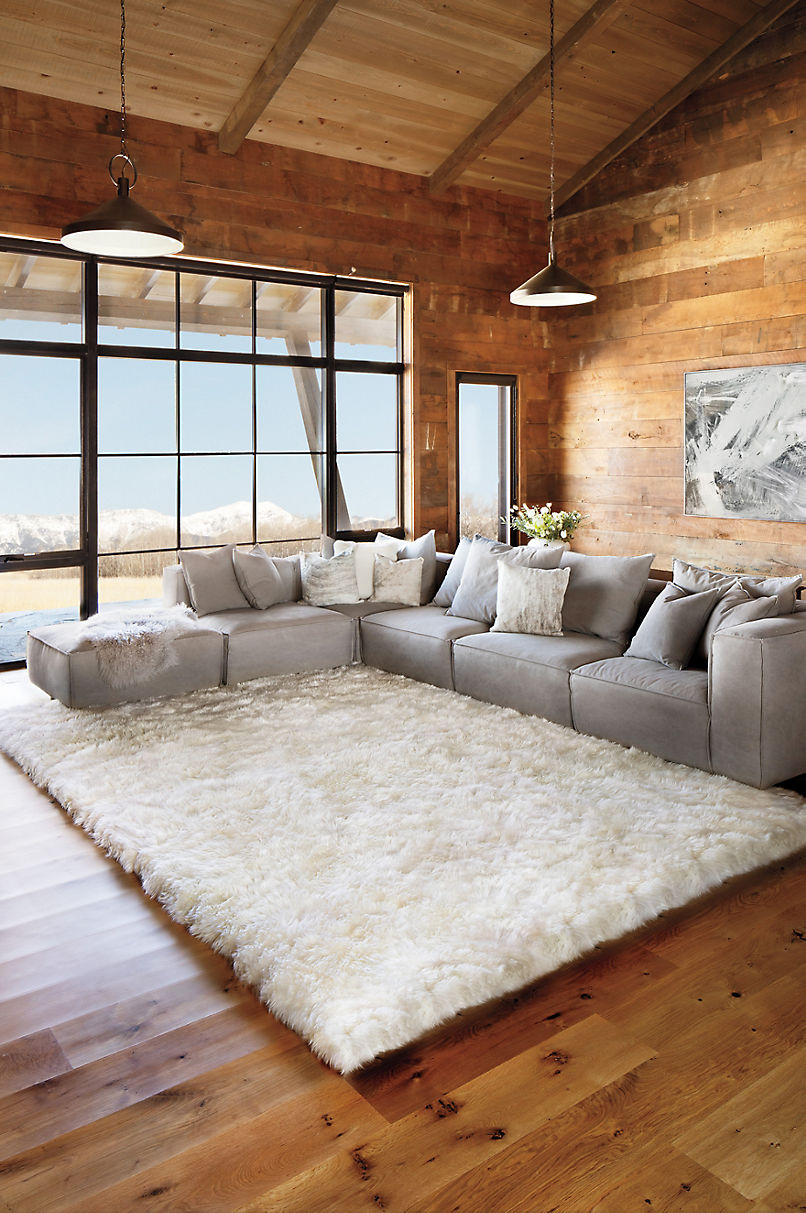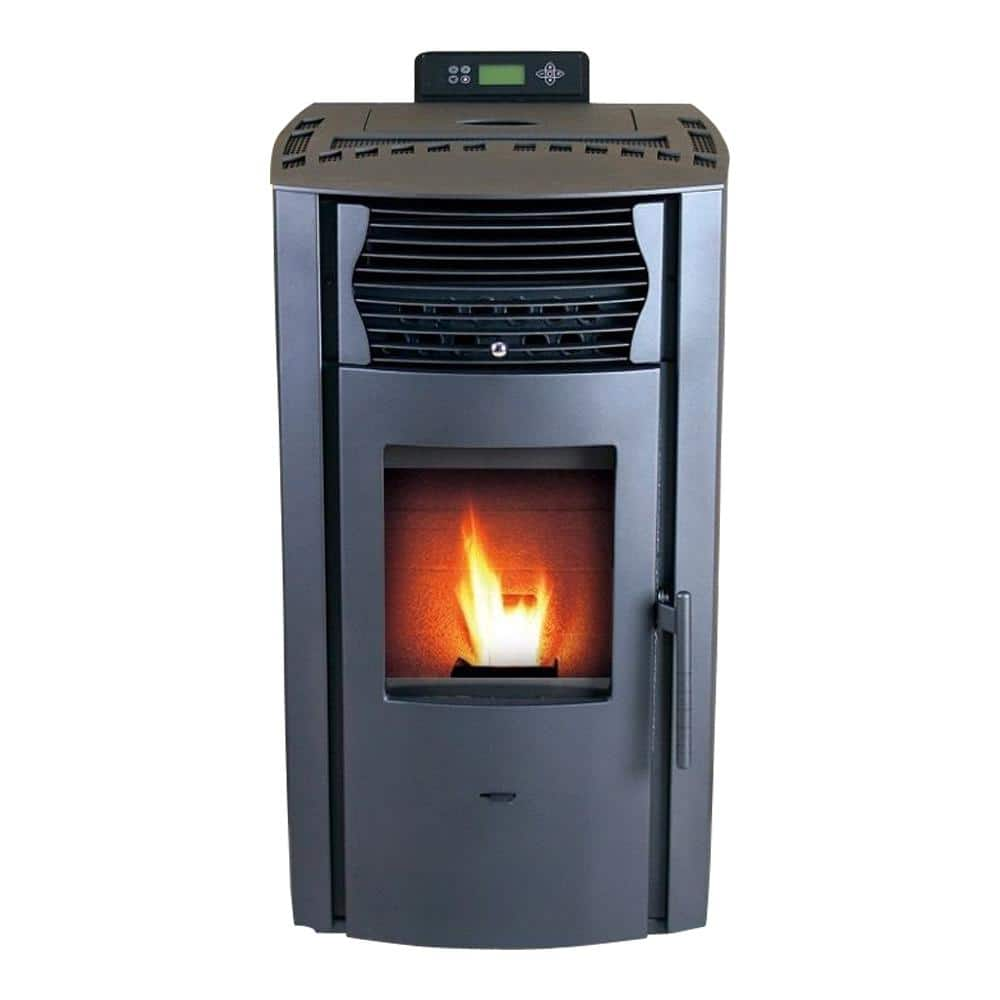Husky 46 in. W x 24.5 in. D Standard Duty 9-Drawer Mobile Workbench Cabinet with Solid Wood Top in Gloss Black
100 lb. rated Soft-Close ball-bearing drawer slides. Power strip with USB and drawer liners. Minimal Assembly required: install casters and handle.
The all new Husky Extra-Deep 46 in. 9-Drawer Mobile Work Bench has arrived. This work bench is 24.5 in. D, which creates 36% more storage capacity than traditional 18 in. D units. The extra-depth also means there is a much larger solid wood top to use as a work surface for all your projects. An integrated power strip on the side of the work bench provides easy access to power outlets and 2 USB Ports, so your tools and other electronic devices can always be charged up and ready to go. There is plenty of storage options within the work bench inside the 9 lockable 21.7 in. D drawers. Each drawer glides easily on 100 lbs. rated ball-bearing soft-closing drawer slides and the large bottom drawers have an extra-set of slides to accommodate heavier items up to 200 lbs. Each drawer also has a premium pre-cut drawer liner that will protect both your tools and drawers. Finally, the entire work bench can easily move around your work space with four 5 in. x 2 in. casters and large ergonomic push handle.
- Drawer dimensions: top drawer: 41.5 in. W x 21.7 in. D x 4.0 in. H, 4-small drawers: 19.4 in. W x 21.7 in. D x 3.0 in. H, 2-medium drawers: 19.4 in. W x 21.7 in. D x 3.5 in. H, 2-large drawers: 19.4 in. W x 21.7 in. D x 9.4 in. H
- 2 full extension ball bearing slides support up to 100 lbs. and feature soft-closing system that prevents drawers from slamming shut and ensures they stay closed
- All welded steel construction with a tough, rust-resistant powder coat black paint finish
- 46 in. x 24 in. solid wood top provides a large work surface
- Ergonomic tubular side handle makes it easy to move your cabinet around your work space
- 5 in. x 2 in. casters (2 stationary and 2 swivel with toe breaks) can support up to 1,200 lbs.
- Internal keyed locking system (with 2 provided keys) provide added security
- Integrated power strip with power outlets and 2 USB ports
- Minimal assembly required: attach casters and handle
- Carton dimensions: 50.5 in. W x 28.8 in. D x 34.3 in. H with a weight of 220.7 lbs.
Additional information
| Dimensions | H 37.1 in, W 46 in, D 24. in |
|---|---|
| Manufacturer Warranty | 3 year Limited Warranty |






by Richard
It’s the perfect size. Love that it has wheels. Slow close drawers. The power strip on the side is a nice added feature with everything that needs charging these days.
by Carolyn
What stood out most was at the bottom of the workbench was bent in everything else was okay.
by Harambe
Amazing toolbox, holds everything I need for auto maintenance/repair. I feel like I stole it at the sale price of $800. High quality + great value
by Donald
The cabinet was damaged when I received it but HM compensated me for the damage. Other than that the cabinet for the money looks to be made relatively well.